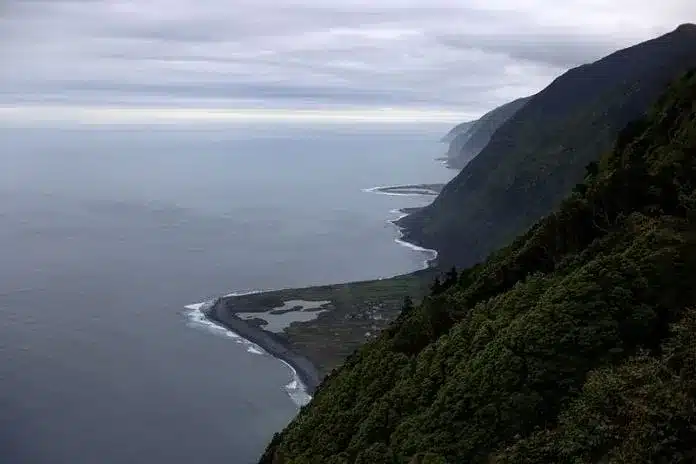About Azores Islands:
- Location: The Azores Archipelago is a group of nine islands in the North Atlantic region.
- Origin: The islands and islets are of volcanic origin, some of which have been inactive since they were formed. The archipelago is part of the Autonomous Region of the Azores.
- These are volcanic islands that originated from the Azores Plateau. The island group lies above the Azores Triple Junction, a junction where three of the world’s main tectonic plates (Eurasian, North American, and African) meet.
- The Mid-Atlantic Ridge is the main structure between the African-Eurasian Plate and the North American Plate crossing the Azores Plateau.
- The islands lie in a northwest-southeast direction, and are divided into three groups: northwest, central and eastern.
- Mountain: Mount Pico, located on Pico Island, is the highest point on the archipelago,
- Climate: Oceanic subtropical climate.
- Fauna: The islands’ Laurel forests are home to numerous species, including endemic plants and animals.
- At least two endemic bird species still survive on the archipelago, including the Azores bullfinch restricted to laurel forests, and the Monteiro’s storm petrel.
Q1: What is an archipelago?
An archipelago is an area that contains a chain or group of islands scattered in lakes, rivers, or the ocean.
Source: Azores create largest marine protected area in North Atlantic
Last updated on July, 2025
→ UPSC Notification 2025 was released on 22nd January 2025.
→ UPSC Prelims Result 2025 is out now for the CSE held on 25 May 2025.
→ UPSC Prelims Question Paper 2025 and Unofficial Prelims Answer Key 2025 are available now.
→ UPSC Calendar 2026 is released on 15th May, 2025.
→ The UPSC Vacancy 2025 were released 1129, out of which 979 were for UPSC CSE and remaining 150 are for UPSC IFoS.
→ UPSC Mains 2025 will be conducted on 22nd August 2025.
→ UPSC Prelims 2026 will be conducted on 24th May, 2026 & UPSC Mains 2026 will be conducted on 21st August 2026.
→ The UPSC Selection Process is of 3 stages-Prelims, Mains and Interview.
→ UPSC Result 2024 is released with latest UPSC Marksheet 2024. Check Now!
→ UPSC Toppers List 2024 is released now. Shakti Dubey is UPSC AIR 1 2024 Topper.
→ Also check Best IAS Coaching in Delhi















